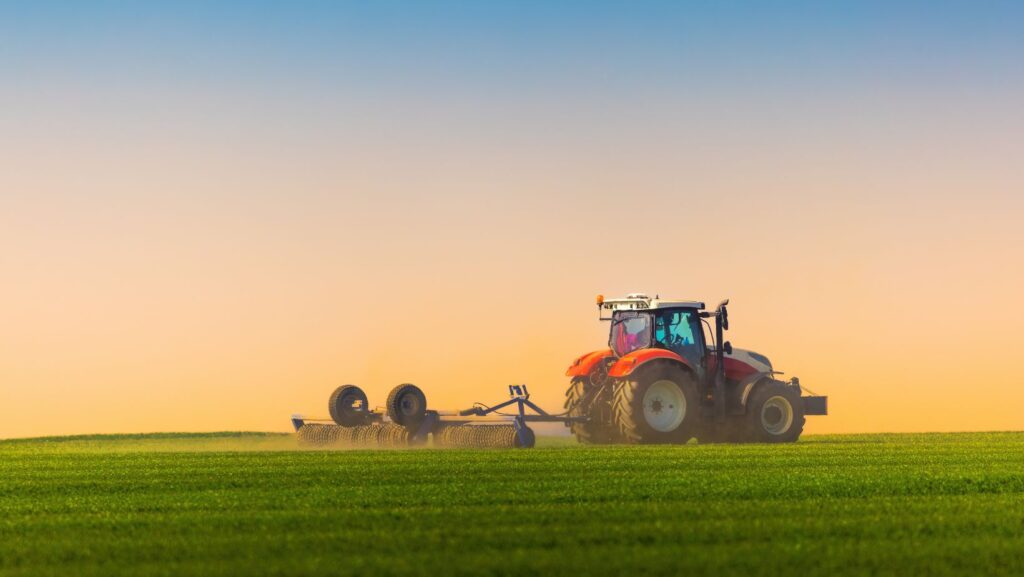Rice field preparation faces unprecedented challenges in modern agriculture. Labor shortages, rising operational costs, and increasingly unpredictable weather patterns create significant hurdles for traditional farming methods. These challenges impact productivity and threaten the sustainability of rice cultivation across global agricultural regions.
 The emergence of autonomous technology in agriculture marks a revolutionary shift in farming practices. Advanced robotics, artificial intelligence, and precision agriculture systems converge to create self-operating machines capable of transforming rice field preparation. This technological revolution promises enhanced efficiency, reduced resource consumption, and improved crop yields through precise, data-driven operations.
The emergence of autonomous technology in agriculture marks a revolutionary shift in farming practices. Advanced robotics, artificial intelligence, and precision agriculture systems converge to create self-operating machines capable of transforming rice field preparation. This technological revolution promises enhanced efficiency, reduced resource consumption, and improved crop yields through precise, data-driven operations.
Core Autonomous Vehicle Technologies
GPS and Positioning Systems
Core autonomous vehicle technologies in modern agriculture combine three key elements to enable precise and efficient field operations. Advanced GPS systems with Real-Time Kinematic positioning achieve centimeter-level accuracy for navigation, while inertial measurement units provide backup positioning capabilities during satellite signal interruptions. This dual-system approach ensures consistent performance across varying field conditions and weather patterns.
Computer Vision and Sensor Integration
Integrating sophisticated sensor arrays, including LiDAR technology, multispectral cameras, and environmental monitors, creates a comprehensive perception system. These sensors use fusion algorithms to generate detailed field maps and enable real-time operational adjustments. The system monitors soil conditions, crop health, and environmental factors to maintain optimal field preparation parameters.
AI-Driven Decision Making
Artificial intelligence is the central nervous system, processing sensor data through machine learning algorithms to make informed operational decisions. The AI continuously learns from each operation, accumulating data about successful techniques, environmental conditions, and operational outcomes. This evolutionary learning process enhances decision-making accuracy and operational efficiency, leading to increasingly effective field preparation strategies.
Electric and Hybrid Power Systems
Modern farming operations increasingly integrate renewable energy sources to power these electric and hybrid vehicles. Solar charging stations and wind energy systems provide sustainable power solutions for autonomous farming fleets. This integration of clean energy reduces the carbon footprint and decreases long-term operational costs while ensuring consistent power availability for extended operations.
Key Applications
Automated Field Leveling
Critical applications of autonomous vehicles in rice field preparation encompass four major operational areas that revolutionize traditional farming methods. At the foundation lies automated field leveling, where laser-guided systems and real-time terrain mapping achieve precise grading. Advanced blade control systems respond dynamically to terrain variations, while continuous surface monitoring ensures uniform leveling. This precision eliminates low spots and optimizes water distribution, creating ideal conditions for root development.
Precision Soil Preparation
Precision soil preparation introduces unprecedented consistency through variable-depth tilling and real-time composition analysis. Sophisticated sensors constantly monitor soil conditions, enabling automated adjustments to tilling parameters and ensuring optimal nutrient distribution. Compaction management systems maintain ideal soil density through pressure sensors and adaptive controls, while targeted nutrient application creates optimal growing conditions.
Smart Irrigation Setup
Smart irrigation management represents a critical advancement in water conservation and crop health. Autonomous systems precisely handle levee construction and water level control, while advanced moisture sensors enable predictive irrigation adjustments. Integrating intelligent drainage patterns and automated distribution networks maintains ideal moisture levels across fields, significantly reducing water consumption while enhancing crop development.
Autonomous Plowing and Tilling
Autonomous plowing and tilling operations transform field preparation through precision control and real-time monitoring. These systems maintain consistent soil depth and optimal furrow spacing while minimizing compaction through intelligent weight distribution. Enhanced organic matter integration capabilities optimize the incorporation of crop residues and amendments, promoting long-term soil health and creating superior growing conditions for rice plants.
Benefits For Rice Farmers
Labor Cost Reduction
Implementing autonomous vehicles in rice farming delivers substantial labor cost reductions while enhancing operational efficiency. These systems significantly decrease workforce requirements and training costs while improving worker safety. Autonomous operations provide consistent quality regardless of human fatigue factors, reducing supervision needs while maintaining optimal field preparation standards. This reliability leads to improved working conditions, higher job satisfaction, and reduced staff turnover.
Enhanced Resource Efficiency
Resource efficiency represents another key benefit through smart technology integration and data-driven management. Advanced monitoring systems optimize fuel consumption and input application through precise path planning and scheduling. Real-time tracking of soil conditions and erosion patterns enables automated adjustments to cultivation practices, preserving topsoil integrity while minimizing environmental impact. These sophisticated management capabilities generate substantial cost savings to improve rice yield.
24/7 Operation Capability
The continuous operation capability of autonomous systems enables unprecedented flexibility in field preparation timing. These vehicles maintain optimal performance regardless of lighting conditions, with weather monitoring systems ensuring operations continue during favorable conditions while pausing during adverse events. This round-the-clock capability allows farmers to complete critical tasks within narrow weather windows and optimal seasonal timing, significantly reducing weather-related risks while improving crop establishment success rates.
Implementation Challenges
Initial Investment Costs
The implementation of autonomous farming systems demands substantial initial investment, presenting a significant barrier to entry for many agricultural operations. Equipment costs, including vehicles, sensors, and control systems, represent major capital expenditures, while infrastructure development requirements add considerable upfront expenses. Many operations manage these costs through financing solutions, equipment leasing, and cooperative ownership models, with detailed return-on-investment analyses justifying expenditures through projected operational savings.
Technical Infrastructure Requirements
Technical infrastructure requirements create additional implementation challenges, demanding robust support systems and ongoing investment. Essential components include high-precision GPS base stations, reliable data communication networks, charging stations, and maintenance facilities. The integration of these systems requires careful planning and redundant capabilities to maintain operational continuity during technical difficulties or maintenance periods.
Training Needs And Regulatory Considerations
Comprehensive training programs and regulatory compliance represent crucial implementation considerations. Operators require extensive technical training covering system operation, maintenance procedures, and emergency response protocols, while regular updates ensure proficiency with evolving capabilities. Additionally, autonomous farming operations must navigate complex regulatory frameworks across jurisdictions, addressing safety standards, environmental regulations, and insurance requirements while maintaining current operating permits and certifications.
Future Developments
Upcoming Technologies
The future of autonomous farming technology promises significant advancements through emerging innovations in artificial intelligence and sensor technology. Enhanced AI systems enable more sophisticated decision-making capabilities, while improved battery technology extends operational duration. Advanced sensors and communication systems facilitate better coordination between multiple autonomous vehicles, driving continuous improvements in farming precision and efficiency.
Integration with Smart Farming Systems
Integration with comprehensive farm management systems represents a key development trend in autonomous agriculture. Advanced software platforms coordinate operations, resource allocation, and maintenance planning, while weather prediction systems enable proactive adjustments.  Supply chain optimization tools and data-driven decision-making capabilities improve operational efficiency and profitability, providing valuable insights for continuous improvement in farming practices.
Supply chain optimization tools and data-driven decision-making capabilities improve operational efficiency and profitability, providing valuable insights for continuous improvement in farming practices.
Scalability Potential
Scalability potential extends autonomous farming benefits across diverse operation sizes through innovative implementation models. Small farms access technology through scaled equipment options and cooperative ownership arrangements, while custom farming services provide technology access without direct ownership costs. Equipment-sharing programs and regional partnerships expand technology accessibility while maximizing utilization, enabling broader adoption of autonomous farming solutions across the agricultural sector.
Great Practices
Implementation Strategies
Best practices for autonomous farming technology implementation center around four critical areas. Successful implementation requires methodical planning beginning with a comprehensive needs assessment and phased technology introduction. Regular performance monitoring and staff training programs support smooth adoption, while continuous evaluation enables operational optimization. This systematic approach maximizes benefits while maintaining operational continuity during the transition period.
Maintenance Protocols
Proactive maintenance protocols form the foundation of reliable autonomous operations. Regular inspections and preventive maintenance schedules maximize equipment reliability, while systematic component replacement prevents unexpected failures. Software update management and detailed technical documentation ensure optimal system performance and security, extending equipment lifespan while minimizing disruptions.
Safety Guidelines
Safety guidelines demand rigorous adherence through comprehensive protocols and consistent implementation. Emergency shutdown capabilities provide immediate hazard response, while established safety zones and access controls protect workers and equipment. Regular safety audits verify compliance and identify risks, supported by robust communication systems that ensure effective coordination between autonomous systems and human operators.
Data Management
Data management strategies protect operational integrity while enabling performance optimization. Secure storage solutions and regular backup protocols safeguard critical information, while privacy protection measures control data access and sharing. Analysis protocols extract actionable insights from operational data, driving continuous improvement while maintaining security. This integrated approach to data management maximizes technological benefits while protecting sensitive operational information.
Conclusion
Integrating autonomous vehicles in rice field preparation marks a significant advancement in agricultural technology. While challenges exist, the benefits of improved efficiency, reduced labor needs, and enhanced precision make this technology increasingly attractive to forward-thinking farmers. As technology continues evolving, autonomous vehicles will expand in modern rice cultivation.


